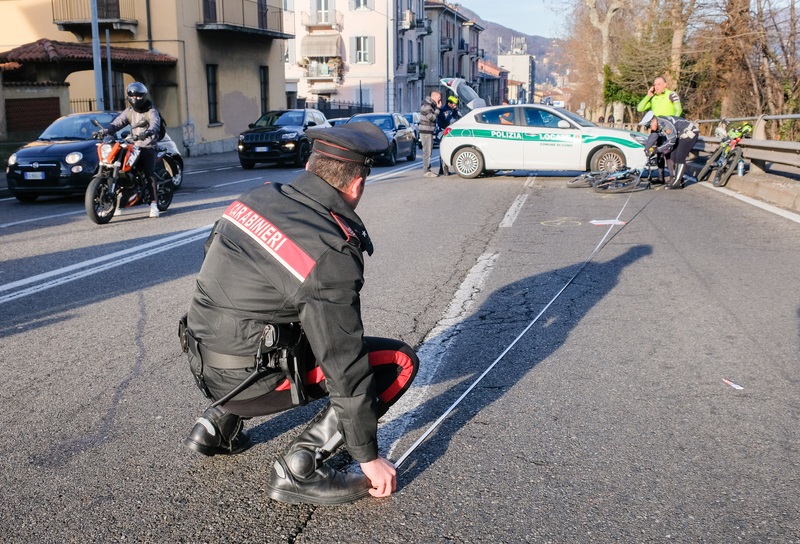New safety technologies could play a major role in reducing the numbers killed on European motorways, according to the European Transport Safety Council (ETSC), in a new report published today. The new analysis of developments in motorway safety shows that, despite recent progress, around 1,900 were killed on motorways in the EU in 2013. The report cites figures from several countries showing that up to 60 per cent of those killed in motorway collisions were not wearing a seatbelt. It calls on the EU to req
RSSNew safety technologies could play a major role in reducing the numbers killed on European motorways, according to the 3535 European Transport Safety Council (ETSC), in a new report published today.
The new analysis of developments in motorway safety shows that, despite recent progress, around 1,900 were killed on motorways in the EU in 2013.
The report cites figures from several countries showing that up to 60 per cent of those killed in motorway collisions were not wearing a seatbelt. It calls on the EU to require the mandatory installation of intelligent seat belt reminder systems (SBR) for all passenger seats in new cars. Currently only driver seats are required to be fitted with an SBR.
The EU is currently undertaking a review of the safety requirements that all new vehicles sold in Europe must comply with. A new proposal is expected later this year; the rules were last updated in 2009.
The authors also recommend the EU requires the installation of intelligent speed assistance (ISA) and lane departure warning systems (LDWS) in new vehicles. ISA is an in-car system that uses GPS data and sign-recognition cameras to help drivers keep to speed limits. The technology could cut deaths overall by 20 per cent. LDW systems alert the driver if they drift out of their lane, a sign of fatigue or distraction that can be fatal; it is already mandatory for new lorries and buses.
The report also highlights the need for the1816 European Union to do more to reduce the numbers of people killed on urban and rural roads as figures show motorway deaths are falling faster than deaths on the rest of the road network. Between 2004 and 2013, the number of people killed on motorways in the EU decreased by eight per cent per year on average, compared to 6.5 per cent on other roads. To narrow the gap in progress, the report recommends extending EU infrastructure safety rules, which currently apply mainly to Europe’s major motorways, to the rest of the road network. The 1690 European Commission is set to publish an update to that legislation later this year.
In particular the authors cite road safety audits - independent technical checks aimed at identifying unsafe features of a road - as a key element in EU infrastructure rules that is helping to save lives and should therefore also be applied to other roads. Road safety impact assessments for new projects, treatment of high-risk sites on existing roads and regular safety inspections as part of maintenance work are also crucial. Independent research highlighted in the report indicates that these measures can cut collisions by up to 20 per cent.
The researchers found that between 2004 and 2013, Lithuania achieved the best average year-on-year reduction in deaths on motorways (-20 per cent), followed by Slovakia (-14 per cent) and Spain (-13 per cent). Denmark, Austria, Great Britain, the Czech Republic, The Netherlands and Italy achieved better reductions than the EU average. Poland also managed to cut deaths despite quadrupling the length of its motorway network over the same period from 400 to 1500 kilometres.
For countries where death rates can be calculated based on traffic volume, the worst performing countries have a risk factor four times higher than the best countries. Denmark, Great Britain, Sweden and the Netherlands have the safest motorways while those in Poland, Hungary and Lithuania have the highest level of risk.
Antonio Avenoso, executive director of ETSC commented: “This report shows that while road safety is improving overall, the benefits of new measures are not being felt equally. Road users in urban and rural areas have seen their levels of risk fall less quickly than that of motorway users. Likewise there are still big differences between member states. It’s up to the EU to help ensure that safety improvements reach further and faster.”
The new analysis of developments in motorway safety shows that, despite recent progress, around 1,900 were killed on motorways in the EU in 2013.
The report cites figures from several countries showing that up to 60 per cent of those killed in motorway collisions were not wearing a seatbelt. It calls on the EU to require the mandatory installation of intelligent seat belt reminder systems (SBR) for all passenger seats in new cars. Currently only driver seats are required to be fitted with an SBR.
The EU is currently undertaking a review of the safety requirements that all new vehicles sold in Europe must comply with. A new proposal is expected later this year; the rules were last updated in 2009.
The authors also recommend the EU requires the installation of intelligent speed assistance (ISA) and lane departure warning systems (LDWS) in new vehicles. ISA is an in-car system that uses GPS data and sign-recognition cameras to help drivers keep to speed limits. The technology could cut deaths overall by 20 per cent. LDW systems alert the driver if they drift out of their lane, a sign of fatigue or distraction that can be fatal; it is already mandatory for new lorries and buses.
The report also highlights the need for the
In particular the authors cite road safety audits - independent technical checks aimed at identifying unsafe features of a road - as a key element in EU infrastructure rules that is helping to save lives and should therefore also be applied to other roads. Road safety impact assessments for new projects, treatment of high-risk sites on existing roads and regular safety inspections as part of maintenance work are also crucial. Independent research highlighted in the report indicates that these measures can cut collisions by up to 20 per cent.
The researchers found that between 2004 and 2013, Lithuania achieved the best average year-on-year reduction in deaths on motorways (-20 per cent), followed by Slovakia (-14 per cent) and Spain (-13 per cent). Denmark, Austria, Great Britain, the Czech Republic, The Netherlands and Italy achieved better reductions than the EU average. Poland also managed to cut deaths despite quadrupling the length of its motorway network over the same period from 400 to 1500 kilometres.
For countries where death rates can be calculated based on traffic volume, the worst performing countries have a risk factor four times higher than the best countries. Denmark, Great Britain, Sweden and the Netherlands have the safest motorways while those in Poland, Hungary and Lithuania have the highest level of risk.
Antonio Avenoso, executive director of ETSC commented: “This report shows that while road safety is improving overall, the benefits of new measures are not being felt equally. Road users in urban and rural areas have seen their levels of risk fall less quickly than that of motorway users. Likewise there are still big differences between member states. It’s up to the EU to help ensure that safety improvements reach further and faster.”








